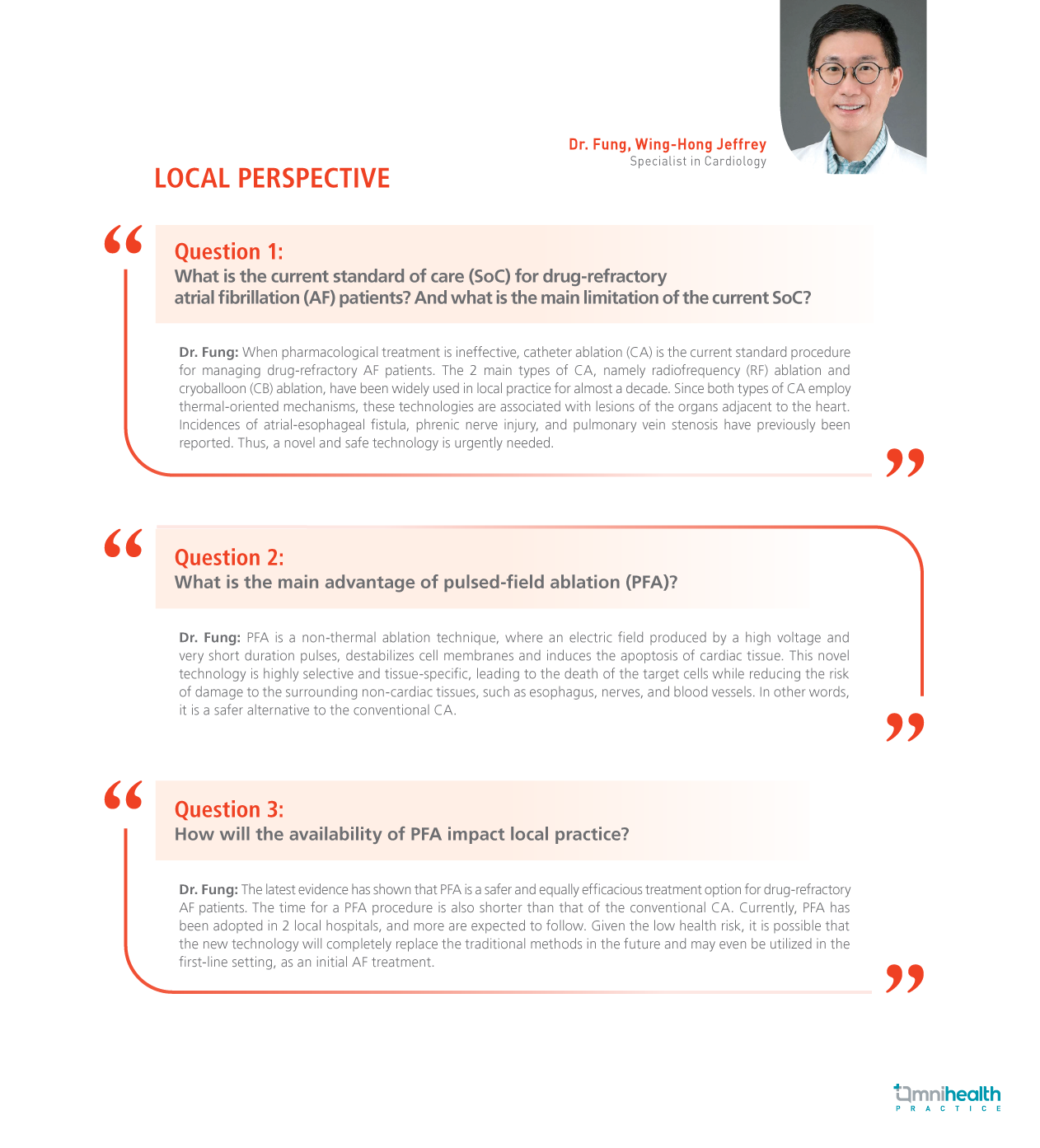CONFERENCE UPDATE: ACC 2023
PFA may offer a time-efficient and safer alternative for drug-refractory AF patients
Catheter ablation (CA) is an effective approach for refractory atrial fibrillation (AF) patients. Nevertheless, the conventional thermal ablation methods may cause collateral damage to the neighboring cell, leading to complications such as esophageal injury, phrenic nerve injury, and pulmonary vein stenosis.1 Hence, a safer alternative is warranted.
Pulsed-field ablation (PFA) is a non-thermal method which creates lesions in cardiac tissue within milliseconds via irreversible electroporation.1 When cardiac cells are exposed to high electric field gradients, their cell membranes will become destabilized, causing subsequent cell death without substantial protein denaturation or tissue scaffolding damage.1 Other tissues are more resistant to such changes.1 In other words, PFA is highly selective and can, theoretically, provide better safety to patients.1
The PULSED AF pivotal trial was a prospective, global, multicenter, non-randomized, paired single-arm study designed to evaluate the safety and efficacy of PFA for the treatment of patients with paroxysmal and persistent AF.1 Patients with recurrent symptoms who failed ≥1 class I or III antiarrhythmic drugs were eligible.1 A total of 300 patients were enrolled and were followed up for 12 months with weekly and symptomatic transtelephonic monitoring.1 The primary efficacy endpoint was freedom from a composite of acute procedural failure, arrhythmia recurrence, or antiarrhythmic escalation through 12 months, excluding a 3-month blanking period to allow recovery from the procedure.1 The primary safety endpoint was freedom from a composite of serious procedure- and device-related adverse events (AEs).1
Results showed that the primary efficacy endpoint was met in 66.2% (95% CI: 57.9-73.2) and 55.1% (95% CI: 46.7-62.7) of paroxysmal and persistent AF patients, respectively.1 Specifically, the proportion of patients who were free from any atrial arrhythmia recurrence after the 90-day blanking period was 69.5% and 62.3% for the paroxysmal and persistent AF groups, respectively.1 About 79.7% of the paroxysmal AF patients and 80.8% of the persistent AF patients were free from recurrence of any symptomatic atrial arrhythmias.1 A total of 8% of paroxysmal AF patients and 9% of persistent AF patients underwent repeat ablation beyond the blanking period.1
Regarding safety, the 6-month AE rate was 0.7% in both paroxysmal and persistent AF groups.1 There was 1 case of cerebrovascular accident in the paroxysmal group, 1 case of pericardial effusion in the persistent group, and 1 death in each cohort during the follow-up period.1 No cases of phrenic, esophageal, pulmonary vein injury or deaths related to PFA were reported.1 Other important AEs such as coronary artery spasm or incidental ST-segment elevation were not detected.1
In summary, the PULSED AF pivotal trial demonstrated that PFA achieved a low rate of primary safety AEs and provided high effectiveness consistent with the established ablation technologies for treating AF patients.1 The new modality holds great promise to replace the conventional CA and offers patients an equally effective, time-efficient, and safer alternative.1


